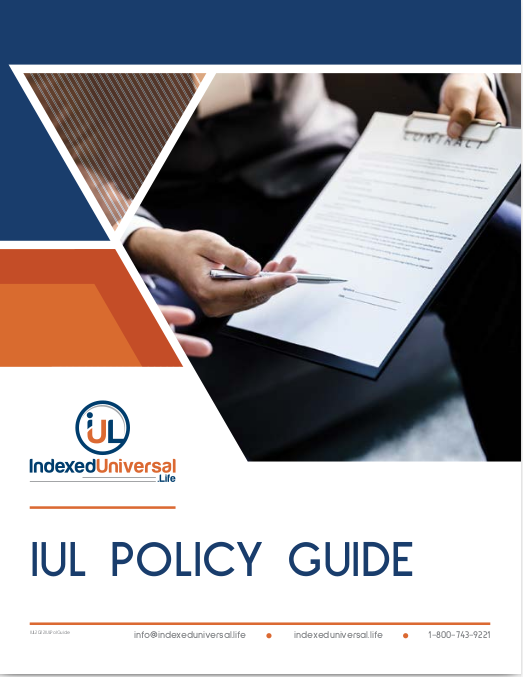
Key Takeaways
-
Indexed Universal Life (IUL) policies offer a mix of growth potential and downside protection but aren’t without risks, requiring careful understanding of their features.
-
The safety of an IUL policy largely depends on the stability of the issuing insurance company, policy design, and your long-term commitment to managing premiums and expectations.
Understanding the Basics of Indexed Universal Life (IUL)
Indexed Universal Life insurance is a unique type of permanent life insurance that combines a death benefit with the potential for cash value growth tied to the performance of a market index. Unlike traditional universal life, IUL offers an opportunity to earn interest based on market performance without directly investing your money in the market. This distinctive structure is appealing because it promises growth potential with limited downside risk.
But here’s the important question you might have: how safe are these Indexed Universal Life insurance policies, really? Let’s explore three crucial safety factors you need to consider before diving into an IUL policy.
Safety Factor 1: Stability of the Insurance Company
Why the Insurer’s Financial Strength Matters
When you buy an IUL policy, you’re essentially entering into a long-term agreement with an insurance company. Therefore, the financial health of that company is absolutely crucial. An insurer’s ability to honor their commitments decades into the future hinges on their financial stability and longevity.
Insurance companies undergo regular evaluations by independent rating agencies such as A.M. Best, Moody’s, Standard & Poor’s, and Fitch Ratings. These agencies assess insurers based on:
-
Financial reserves and liquidity
-
Debt obligations
-
Profitability
-
Investment strategies
-
Claims-paying history
A strong rating from these agencies typically indicates that your insurance provider is financially robust, making your IUL policy safer.
How to Check Your Insurer’s Financial Strength
-
Visit independent rating websites or the insurer’s own website.
-
Look for ratings such as A+, AA, or AAA.
-
Regularly review the ratings every few years, especially if economic conditions fluctuate significantly.
Remember, you’re purchasing a policy designed to last decades. Ensuring the issuing company can stay solvent and reliable throughout the policy’s lifespan is your first step in assessing safety.
Safety Factor 2: Understanding the Policy Design
How the Index Component Works
IUL policies link the growth of your cash value to the performance of an index, typically something like the S&P 500. Importantly, your cash isn’t directly invested into the market. Instead, the insurer credits interest based on the index’s performance, subject to certain limits:
-
Cap Rate: The maximum interest rate credited, regardless of how high the index performs. For instance, if your cap rate is 10% and the index returns 15%, you’ll still earn only 10%.
-
Floor Rate: Protects you from market downturns. Most IUL policies offer a guaranteed minimum floor rate, commonly around 0%, ensuring your cash value doesn’t decrease due to negative market performance.
Risks Related to Policy Charges and Expenses
Beyond caps and floors, understanding the internal costs associated with your IUL is critical. These policies can have multiple charges that impact safety, including:
-
Cost of Insurance (COI): The primary cost, increasing as you age.
-
Administrative fees: Usually fixed but can vary.
-
Surrender charges: If you cancel or withdraw early (often within the first 10-15 years), substantial penalties can apply.
Ensuring Safety Through Policy Transparency
-
Request detailed illustrations from your insurer showing projected values based on different scenarios.
-
Clarify how caps, floors, and charges are structured and subject to change.
-
Keep an eye on your policy annually to ensure you understand ongoing costs and performance.
Safety Factor 3: Your Long-Term Commitment and Premium Management
Regular Premium Payments Are Essential
Indexed Universal Life policies typically require consistent and adequate premium payments to remain viable. Missing premiums, especially during early years, can severely impact your policy’s cash accumulation and long-term safety.
Some policies offer flexibility in premiums, allowing you to increase or decrease payments as your financial situation changes. However, drastically reducing premiums too early or frequently skipping payments can risk policy lapse, jeopardizing your coverage.
Avoiding Policy Lapse
If your policy’s cash value falls too low due to insufficient premiums or underperformance, you risk lapsing. A lapse means losing all your coverage and accumulated cash value. To avoid this:
-
Pay premiums on time and in full whenever possible.
-
Regularly review your policy statements and discuss with your agent annually.
-
Adjust your premiums proactively if your policy’s performance falters or if your financial goals shift.
Long-Term View and Realistic Expectations
An IUL policy isn’t a quick-profit strategy—it’s designed for long-term financial protection and moderate, reliable growth. Avoid aggressive projections or overly optimistic expectations. Remember:
-
Markets fluctuate.
-
Caps can limit your upside.
-
Long-term policy costs can offset some growth.
Understanding these elements upfront makes your experience safer and aligns your expectations realistically.
How to Maximize Safety in Your IUL Policy
To enhance the safety of your Indexed Universal Life policy, consider these proactive strategies:
-
Annual policy reviews: Schedule regular check-ins to monitor performance.
-
Adjust premium payments strategically: Contribute additional premiums during financially favorable times to bolster your cash value.
-
Stay informed: Regularly review your insurer’s financial ratings.
-
Avoid early withdrawals: Unless absolutely necessary, maintain your policy’s cash value by leaving it untouched, especially in the first 10-15 years.
Taking these steps increases the likelihood that your IUL policy will deliver the safety and growth you seek.
The Role of Riders and Optional Features
Another aspect impacting safety involves additional policy riders. Common riders include:
-
Guaranteed insurability rider: Lets you increase your death benefit without further medical underwriting.
-
Accelerated death benefit rider: Allows access to a portion of the death benefit in case of terminal illness or critical illness.
-
No-lapse guarantee rider: Ensures your policy won’t lapse even if your cash value dips below required levels, provided you maintain minimum premium payments.
These riders enhance your policy’s safety net, giving you flexibility and protection under changing circumstances.
Ensuring Safety Means Asking Questions
When you discuss IUL with an insurance professional, don’t hesitate to ask:
-
How often are cap and floor rates adjusted?
-
What are my guarantees and how long do they last?
-
How frequently should I expect fees to change?
Asking detailed questions and clearly understanding the answers ensures you know exactly what you’re getting into.
Making the Right Choice for Your Future
Indexed Universal Life can be a valuable tool for financial security, combining insurance protection with market-linked growth potential. However, its safety isn’t absolute—it requires diligence, clarity, and ongoing management. Carefully evaluate the insurer, policy design, and your commitment level before signing up.
Taking a cautious, informed approach ensures your IUL policy remains a stable pillar in your financial plan for decades to come.
Is Indexed Universal Life the Right Fit for You?
The safety of Indexed Universal Life hinges heavily on your personal financial situation, long-term commitment, and ability to navigate its complexities. Always consider seeking professional guidance to ensure an IUL policy aligns with your financial goals, risk tolerance, and expectations.





